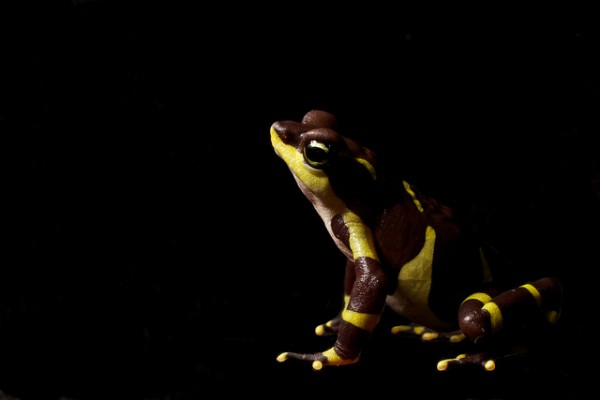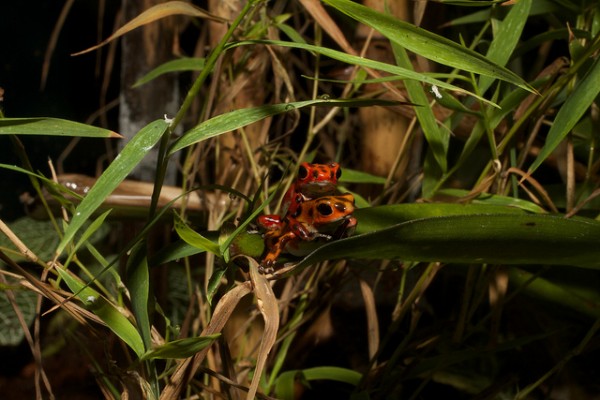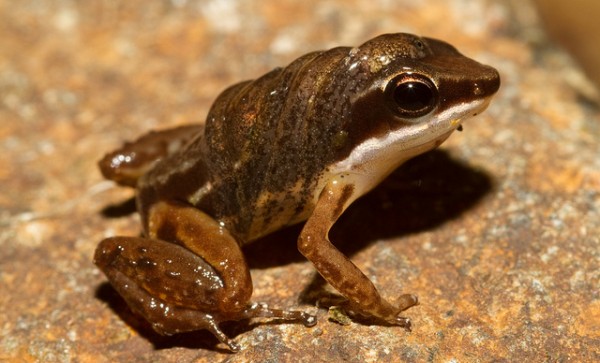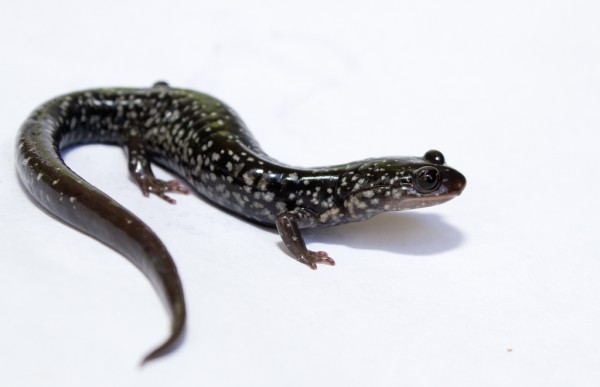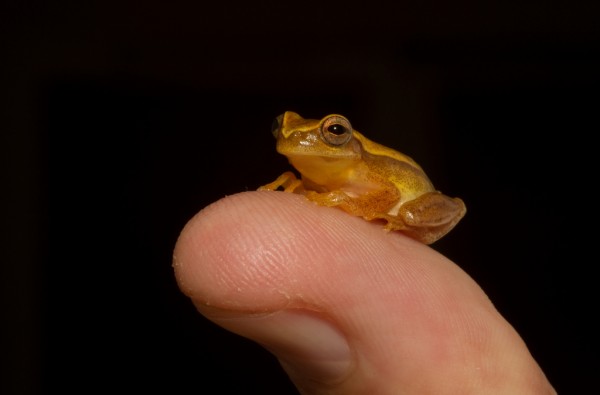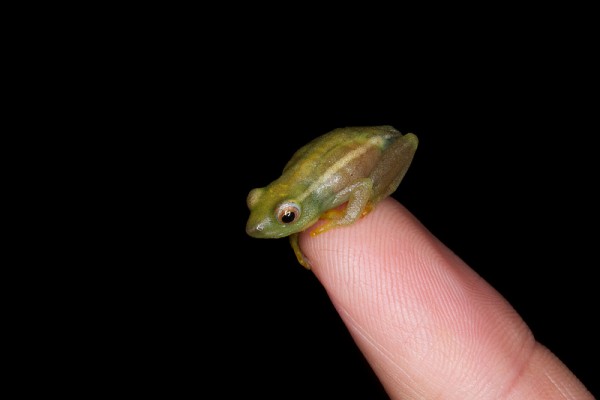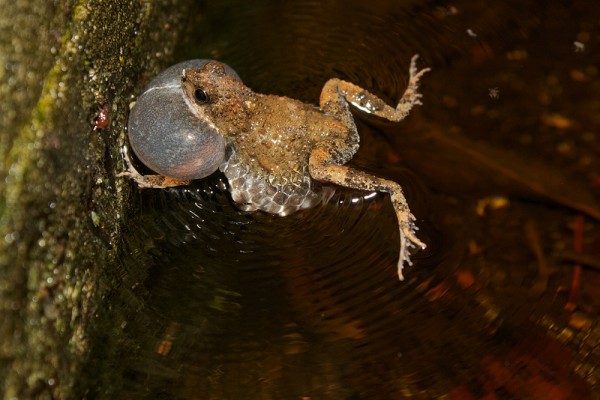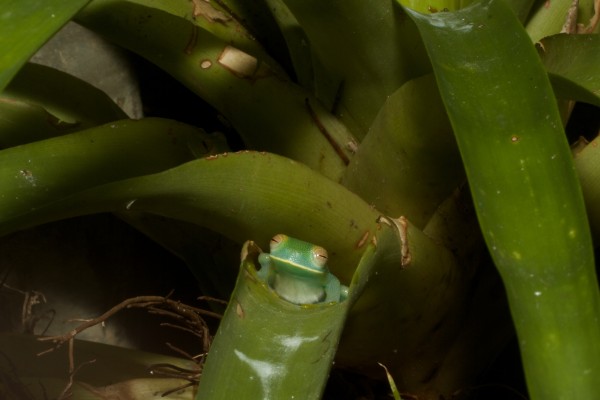
Cochranella granulosa is a beautiful species with grey-gold eyes and a dark green, granular dorsal surface gives the frog a “crystal-like” appearance. This arboreal species can be found in humid lowlands and mountainous forest. They are usually spotted in bushes and trees along forest streams. Though the granular glass frog ranges from Honduras to Panama, it is more regularly encountered in Costa Rica and Panama, while sightings are rarely recorded in Honduras and Nicaragua. These nocturnal frogs can also be found sleeping on the leaves of bromeliads during the day in the exhibit Fabulous Frogs of Panama at Punta Culebra Nature Center. Though the frog is listed as Least Concern on the IUCN Redlist due to its wide distribution, it still faces threats of severe habitat loss resulting from deforestation and water pollution.
Did you know? The word granulosa is derived from the Latin word granulum, which means small-grained or granular. This reference was drawn due to the granular bumps on the frog’s transparent skin. If you look at the frog from its underbelly, you can see right through its skin and get a great glimpse of its tiny organs!

